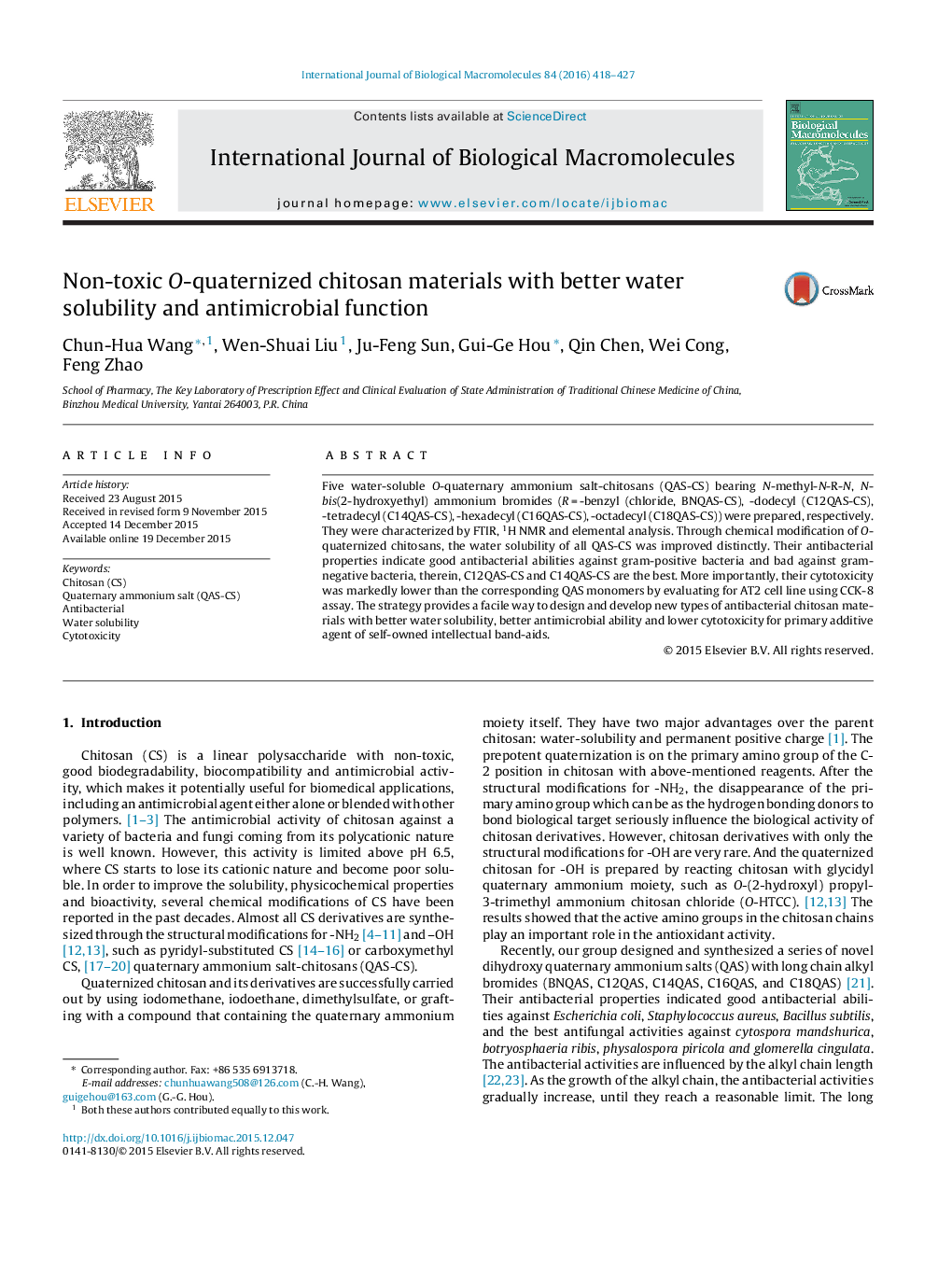| Article ID | Journal | Published Year | Pages | File Type |
|---|---|---|---|---|
| 1986026 | International Journal of Biological Macromolecules | 2016 | 10 Pages |
•Five QAS-CS were prepared and confirmed by FTIR, 1H NMR and elemental analysis.•The water solubility of all QAS-CS was improved distinctly.•They showed the better antibacterial abilities against gram-positive bacteria.•Their cytotoxicity was markedly lower than the corresponding QAS monomers.
Five water-soluble O-quaternary ammonium salt-chitosans (QAS-CS) bearing N-methyl-N-R-N, N-bis(2-hydroxyethyl) ammonium bromides (R = -benzyl (chloride, BNQAS-CS), -dodecyl (C12QAS-CS), -tetradecyl (C14QAS-CS), -hexadecyl (C16QAS-CS), -octadecyl (C18QAS-CS)) were prepared, respectively. They were characterized by FTIR, 1H NMR and elemental analysis. Through chemical modification of O-quaternized chitosans, the water solubility of all QAS-CS was improved distinctly. Their antibacterial properties indicate good antibacterial abilities against gram-positive bacteria and bad against gram-negative bacteria, therein, C12QAS-CS and C14QAS-CS are the best. More importantly, their cytotoxicity was markedly lower than the corresponding QAS monomers by evaluating for AT2 cell line using CCK-8 assay. The strategy provides a facile way to design and develop new types of antibacterial chitosan materials with better water solubility, better antimicrobial ability and lower cytotoxicity for primary additive agent of self-owned intellectual band-aids.
Graphical abstractFigure optionsDownload full-size imageDownload as PowerPoint slide
